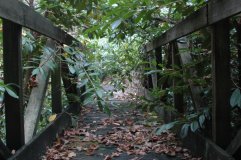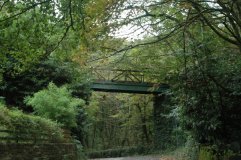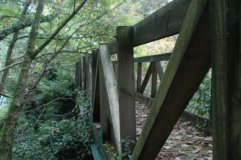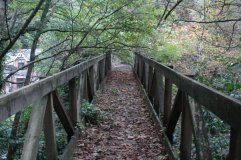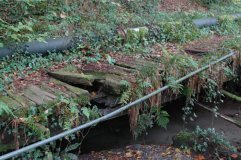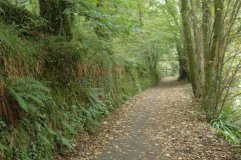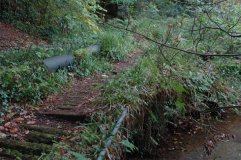Lee Moor Tramway
Cann Wood Incline - Bottom NGR SX530590
Torycombe Incline - Bottom NGR SX570610
The Lee Moor Tramway opened in about 1853 to carry china clay and other minerals from Lee Moor on the S. side of Dartmoor to the quays in Plymouth initially by horse, then by a mix of horse, gravity and steam power. The LMT system was 4' 6" gauge - known locally as 'Dartmoor Gauge'.
The LMT company owned two Pecketts locomotives which were confined to the upper end of the line around the clay pits at Lee Moor and the first few miles to the Cann Incline. In the middle of the system was a rope worked incline at Cann Woods where the wagons were lowered down the rope incline. The lower end of the system was horse worked right up until the end, and, unusually, it made a crossing on the level of the Great Western mainline just East of Laira engine shed where horses were used to take the short clay trains on to the loading wharfs in Plymouth. Traffic declined after the war when it was taken over by road transport and later on via a pipeline.
The line had two inclines the longer at Cann Wood was 1.25 miles long with a 1 in 11 gradient. It was a three track (middle rail common) with passing loop self acting incline, the upper wagons being loaded are heavier and their descent pulled up the empty lower wagons. This mechanism was controlled by a winding drum at the top which was braked to control the speed of the wagons. You can still see the bridge which carried the tramway over the road veering off to the NW at Plym Bridge, this is the major remaining feature of the incline although most of the route can still be traced.
The second incline was at Torycombe, both of these were built in 1853 but had to be rebuilt in 1858 after lots of derailments and the line was thought to be dangerous. The Troycombe incline was again self acting similar to the Cann incline but was a true single line with a passing loop. It was originally 29.5 chains long, when rebuilt it was 32.5 chains long, but the rise was still the same 300 feet.
The Lee Moor Tramway Preservation Society - currently at Buckfastleigh have a preserved Peckett 0-4-0ST 'Lee Moor No 2' and the sole surviving LMT china clay wagon together with a collection of LMT railway artefacts in a temporary building. Peckett No 1 went to the Wheal Martyn mining museum near St.Austell.
The Cann Incline and Bridge
